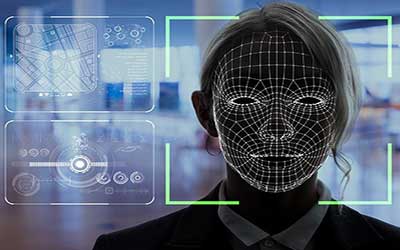Date: 19/05/2023
Relevance: GS-3: Science and Technology- Developments and their Applications, Communication technology
Key Phrases: Department of Telecommunications (DoT), artificial intelligence-based facial recognition tool, Artificial Intelligence and Facial Recognition powered Solution for Telecom SIM Subscriber Verification (ASTR), convolutional neural network (CNN), detecting and blocking possible fraudulent mobile connections.
Why in News?
- The Department of Telecommunications (DoT) has developed an artificial intelligence-based facial recognition tool that it claims has the capability of running checks on subscriber databases of telecom operators to deduce whether it contains multiple connections associated with the same person.
- The DoT claims the tool — called Artificial Intelligence and Facial Recognition powered Solution for Telecom SIM Subscriber Verification (ASTR) — can potentially bring down cyber frauds by detecting and blocking possible fraudulent mobile connections.
The origins of ASTR:
- In 2012, the Department of Telecommunications (DoT) mandated telecom operators to share subscriber databases, including user pictures.
- These images form the core database for the facial recognition algorithm used in ASTR.
- The ASTR project was developed by the DoT's unit in Haryana between April 2021 and July 2021.
- A pilot project was conducted in Haryana's Mewat region to assess ASTR's effectiveness.
- Prior to the pilot, around 16.69 lakh SIMs were registered in Mewat, of which nearly 5 lakh SIMs from various telecom operators were identified as fraudulent.
Convolutional Neural Network (CNN)
- A Convolutional Neural Network (CNN) is a deep learning algorithm specifically designed for processing and analysing visual data, such as images and videos.
- It is widely used in computer vision tasks, including image classification, object detection, and image segmentation.
Fuzzy logic:
- Fuzzy logic is an approach to computing based on "degrees of truth" rather than the usual "true or false" (1 or 0) Boolean logic on which the modern computer is based.
How ASTR works:
- ASTR utilizes convolutional neural network (CNN) models to encode human faces in subscribers' images.
- This encoding accounts for factors such as facial tilt, angle, image opaqueness, and dark colour.
- The facial recognition process involves comparing each face with all faces in the database, grouping similar faces together. ASTR considers two faces to be identical if they match at least 97.5 percent.
- Impressively, ASTR can detect all SIMs associated with a suspected face in less than 10 seconds from a database of 1 crore images.
- After facial matching, ASTR employs "fuzzy logic" to find
similarity or approximate matches for subscriber names.
- For example, if the algorithm searches for "Apple Inc.," it produces related results like "Apple Incorporated," "Apple Park," and "iPhone."
- It also accounts for any typographical errors that may have occurred during the subscriber acquisition process.
- The DoT allows an individual to take nine legitimate mobile phone connections using a single identity proof.
- In essence, what the ASTR does is –
- It looks up if there are more than nine connections against a single individual’s photograph;
- It runs a search through the database to see if the same person has taken SIMs under different names.
What happens next:
- Once the DoT has determined that a set of numbers have been obtained by people through fraudulent means, it shares a list of those connections with telecom operators to block.
- According to the Ministry of Communication, an analysis of more than 87 crore mobile connections was carried out using ASTR in the first phase, where more than 40 lakh cases of people using a single photograph to obtain mobile connections were detected.
- After “due verification”, more than 36 lakh connections were discontinued by telecom operators.
- The same list is also shared with banks, payment wallets, and social media platforms for disengaging these numbers from their respective platforms.
- Notably, WhatsApp has cooperated with the government in disabling accounts created using such numbers, and the government is collaborating with other social media platforms as well.
Conclusion:
- The introduction of ASTR marks a significant leap forward in telecom security. Its advanced AI and face recognition capabilities have enabled the detection and prevention of fraudulent mobile connections.
- By leveraging ASTR's powerful technology, the DoT aims to reduce cyber fraud and ensure a safer digital ecosystem for all.
- With continued advancements in AI and facial recognition, we can expect further improvements in fraud detection tools and increased security in the telecommunications sector.
Source: The Indian Express
Mains Question:
Q. Discuss the significance of ASTR (Artificial Intelligence and Facial Recognition powered Solution for Telecom SIM Subscriber Verification) in combating phone fraud and ensuring cybersecurity in the telecommunications sector.







